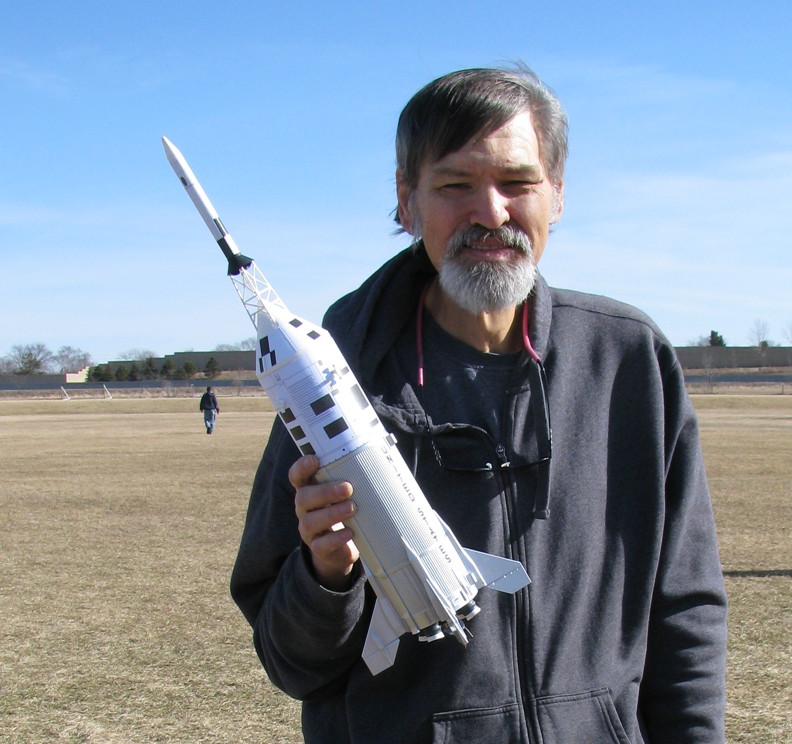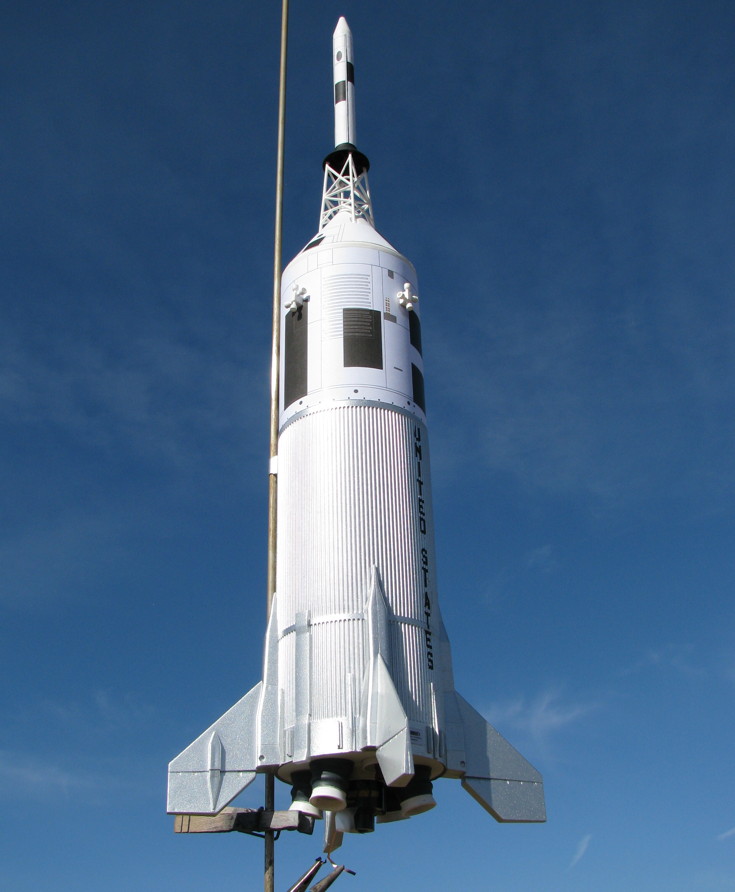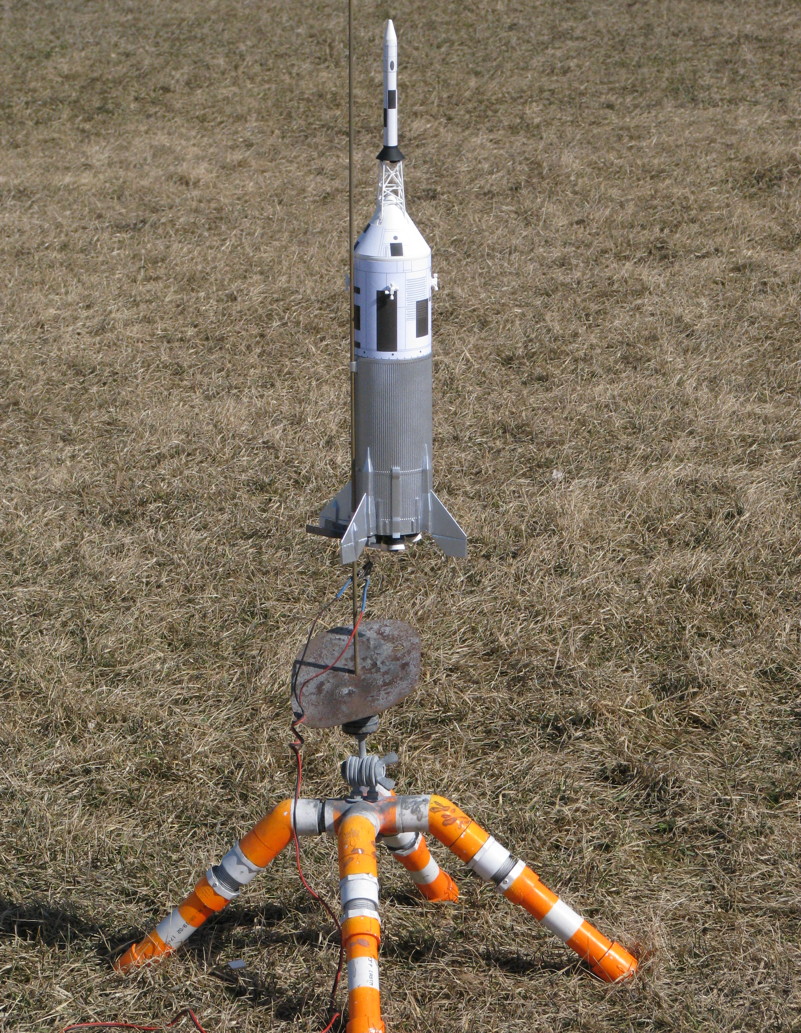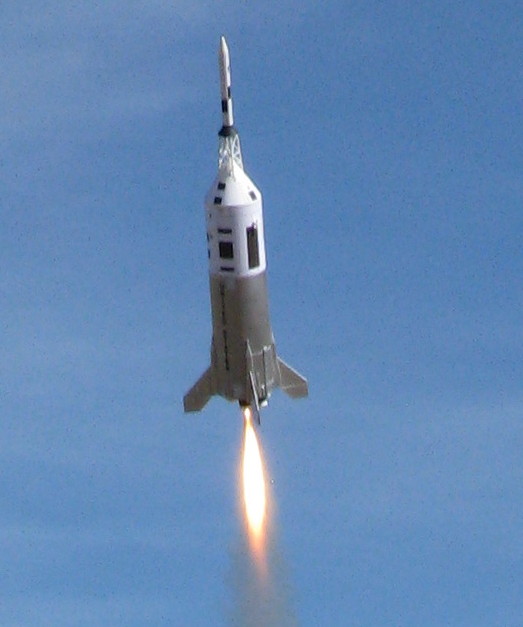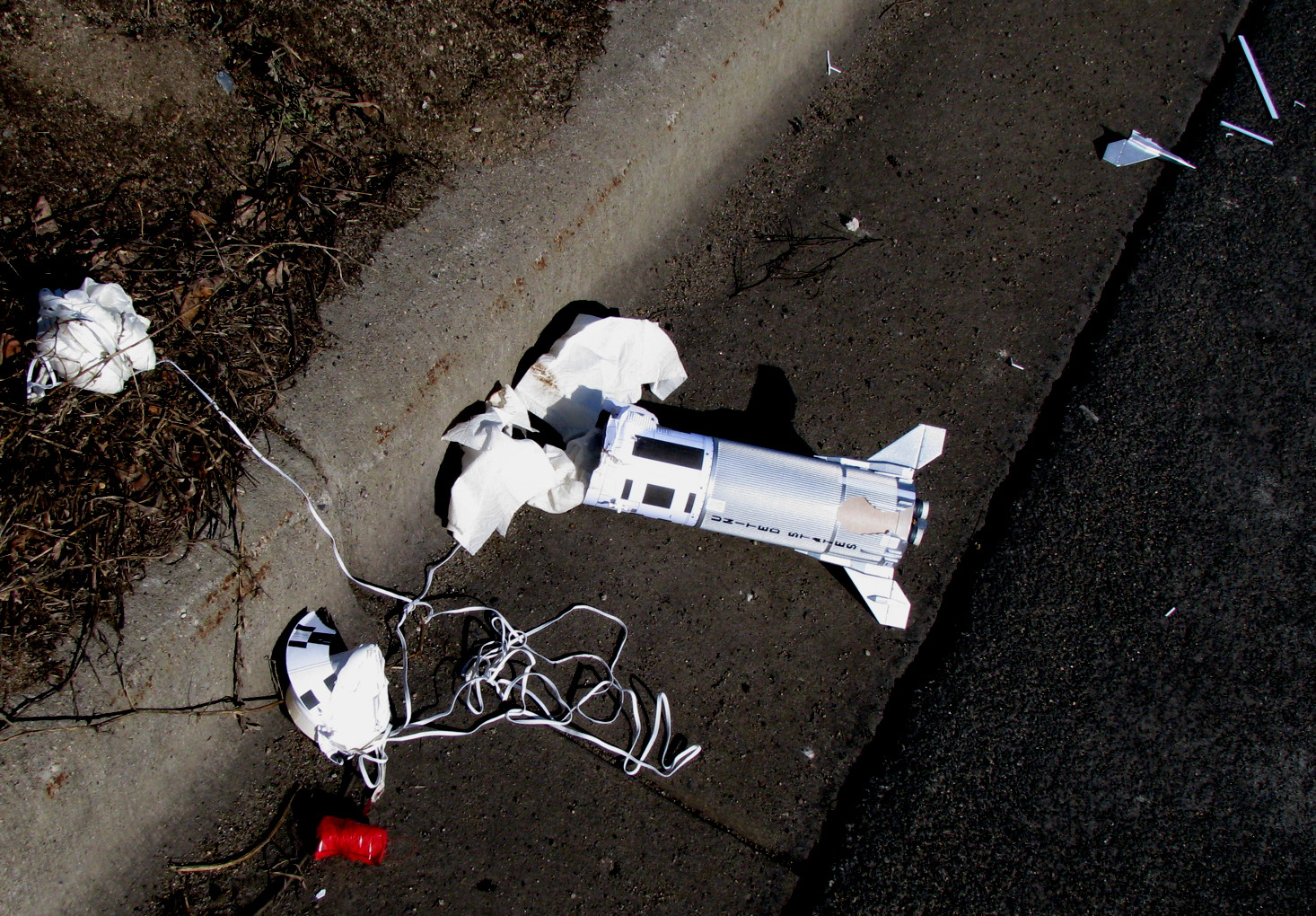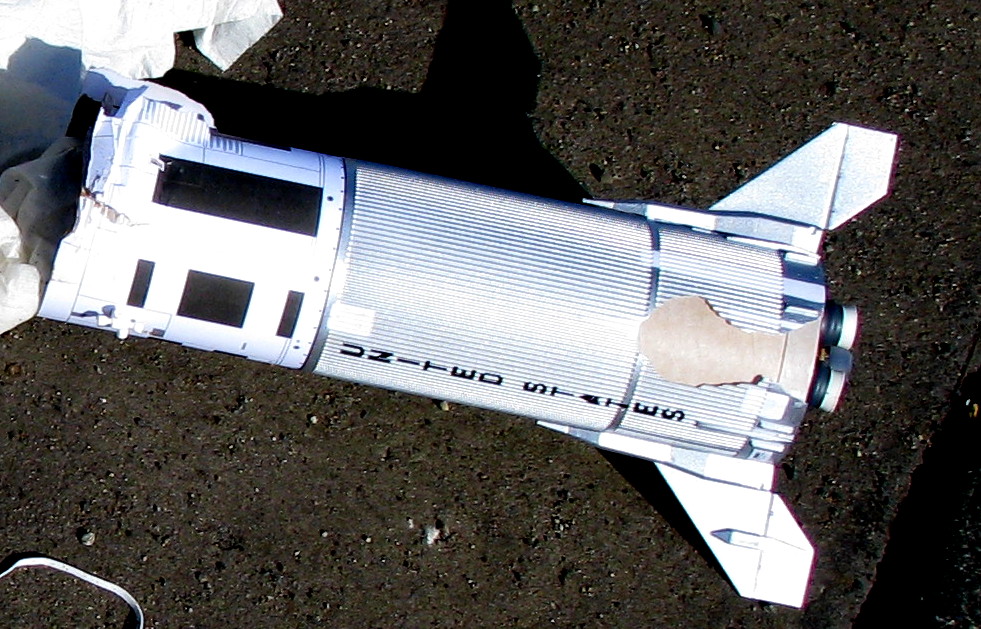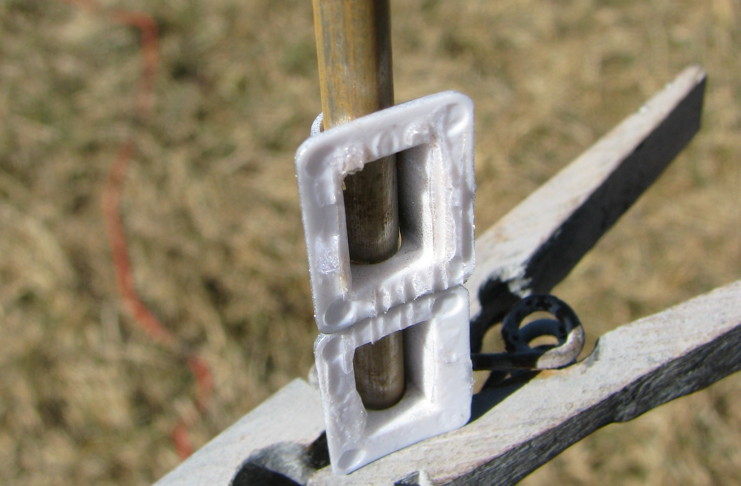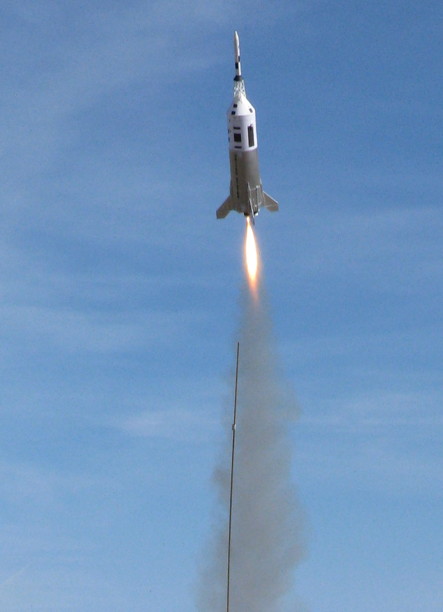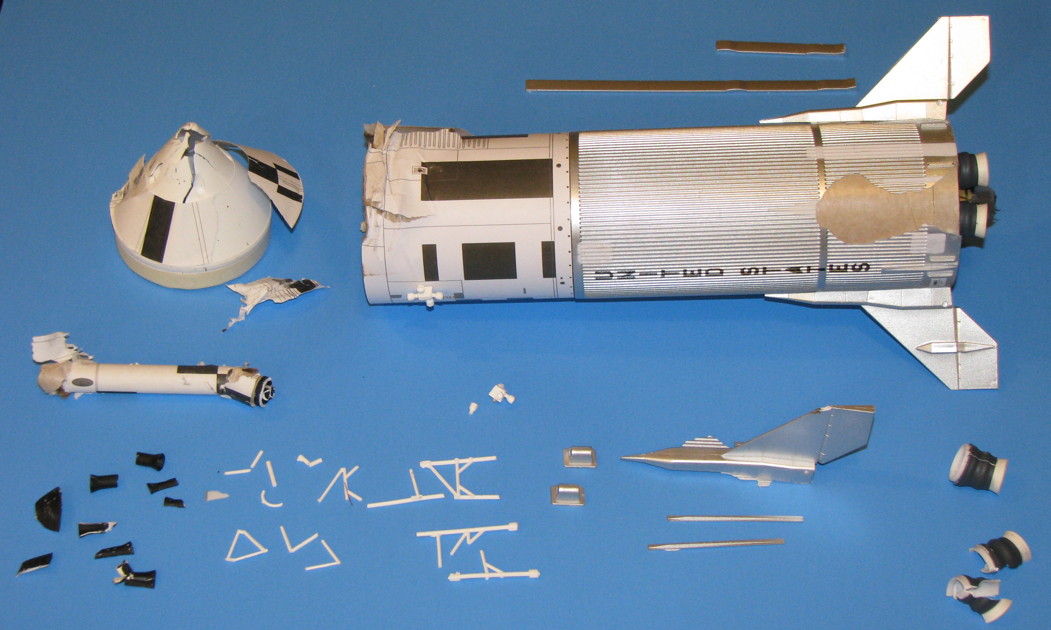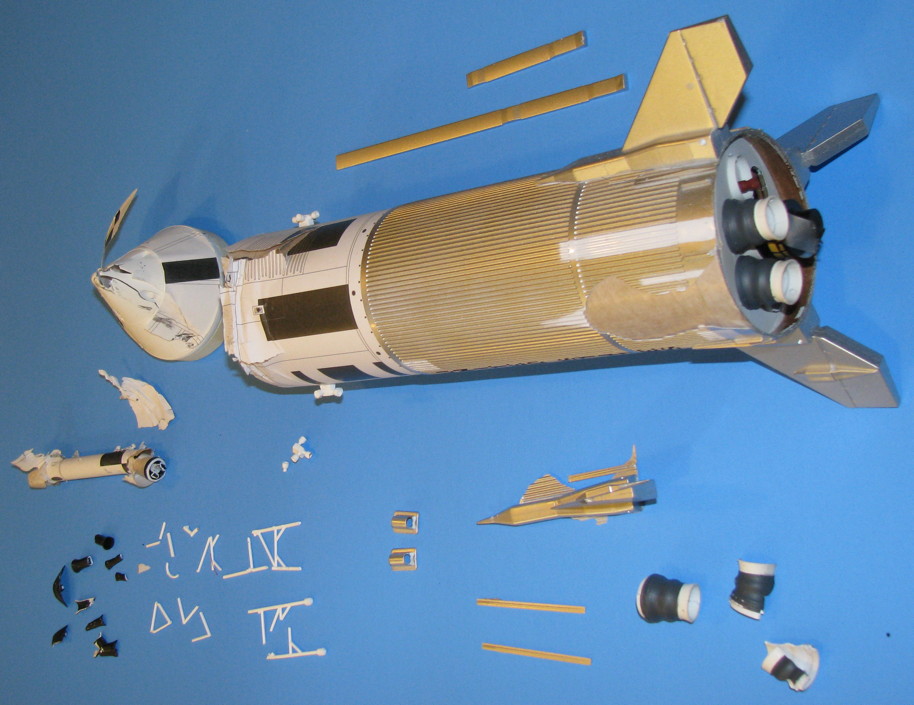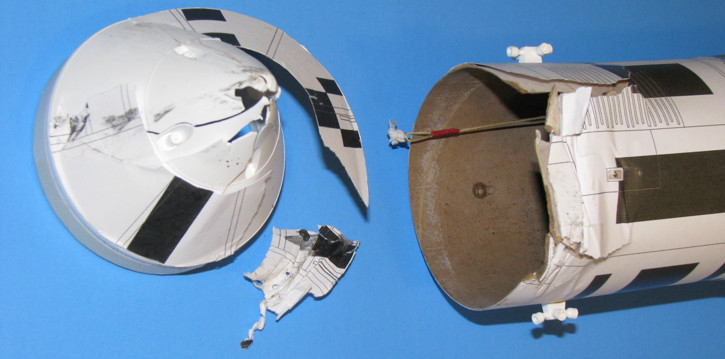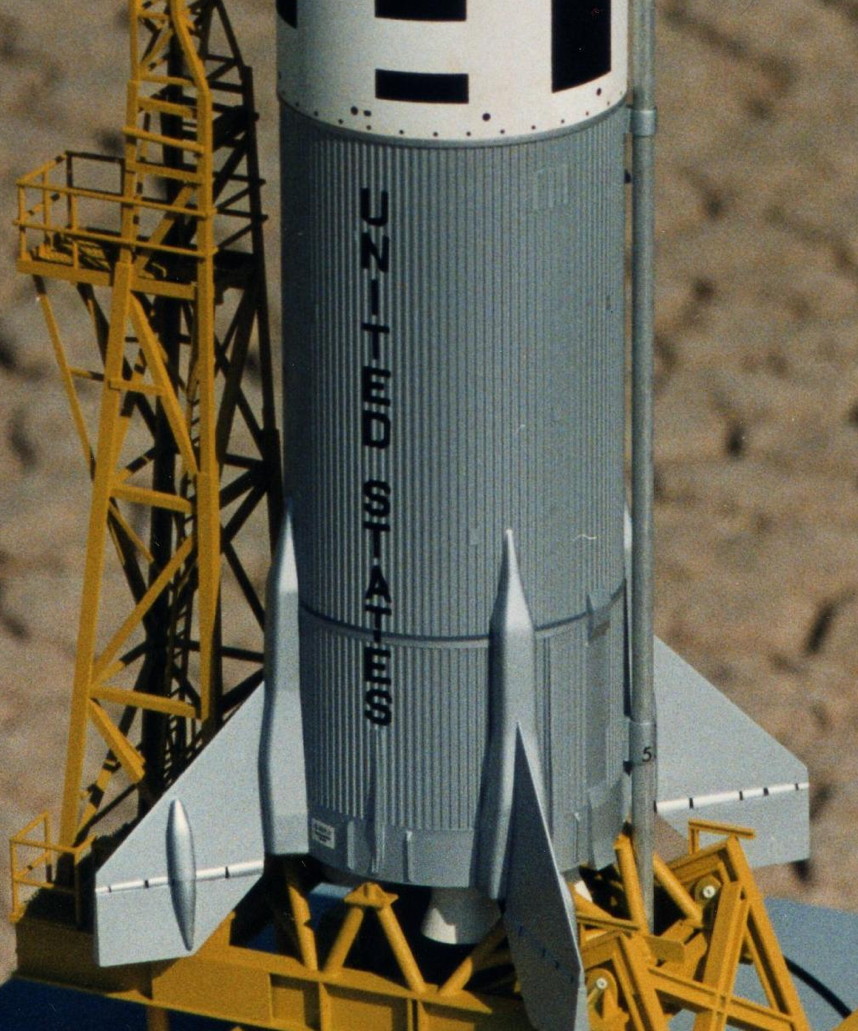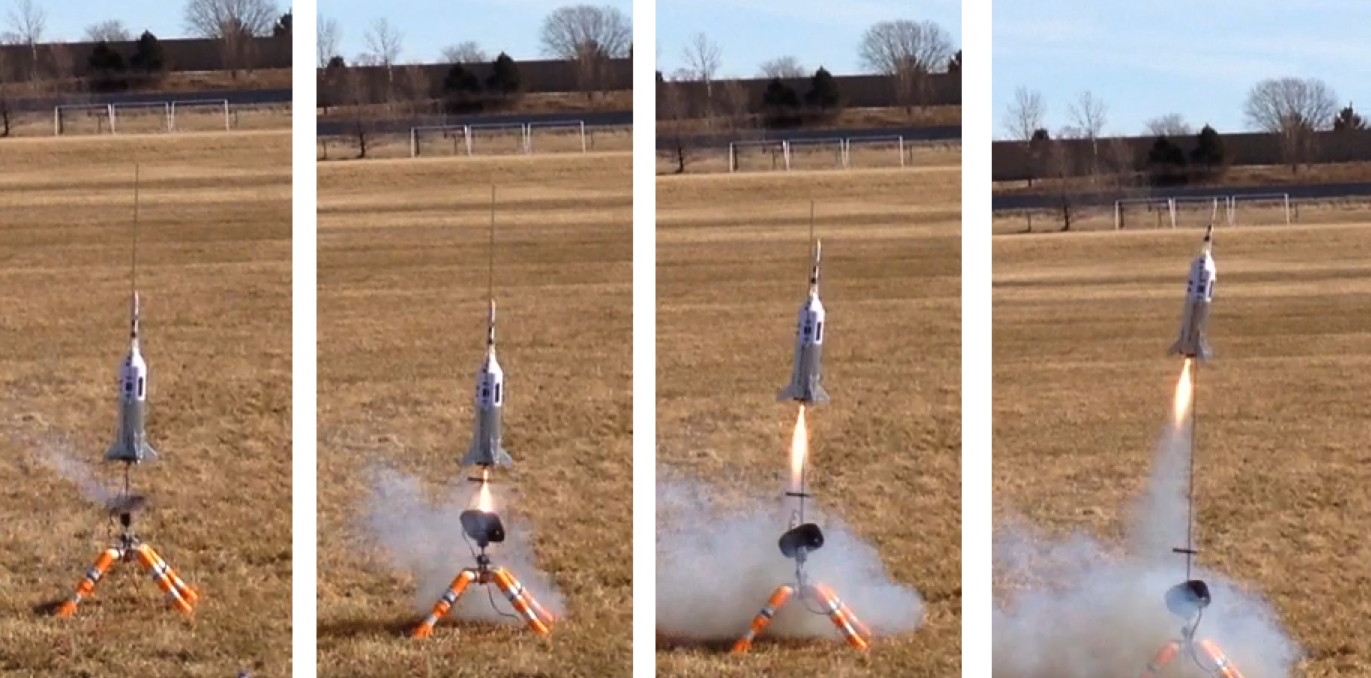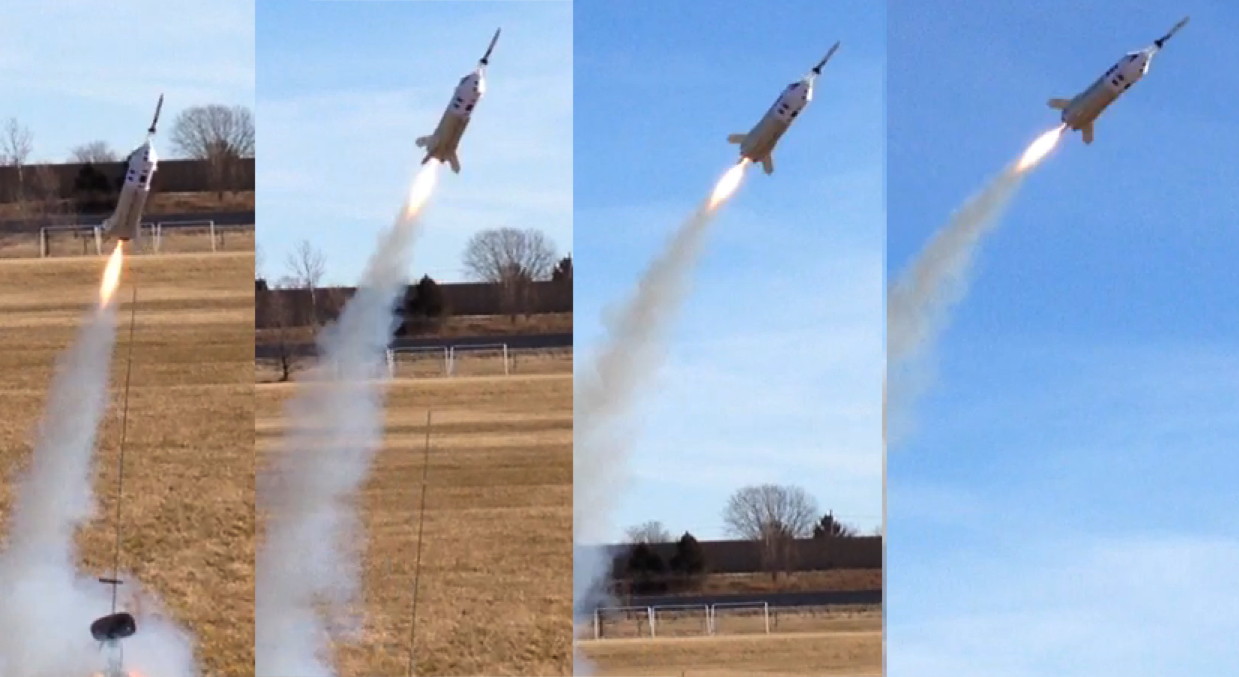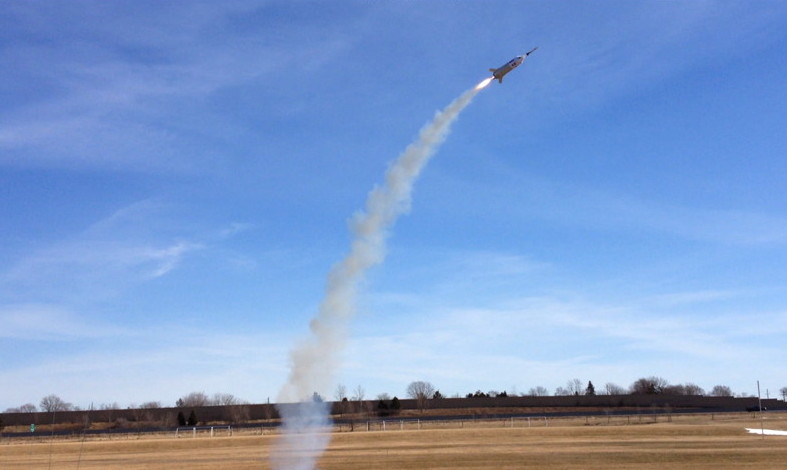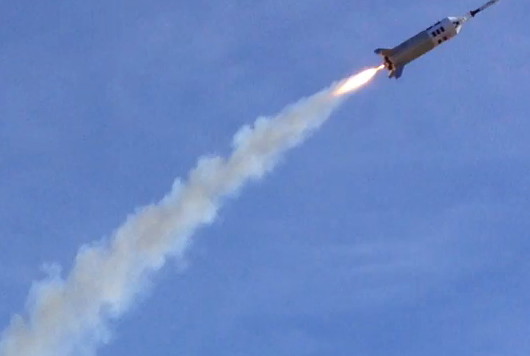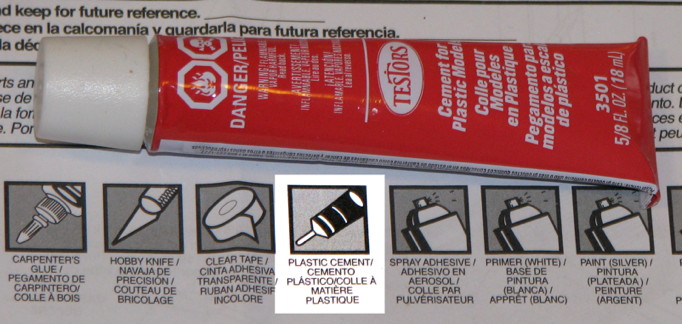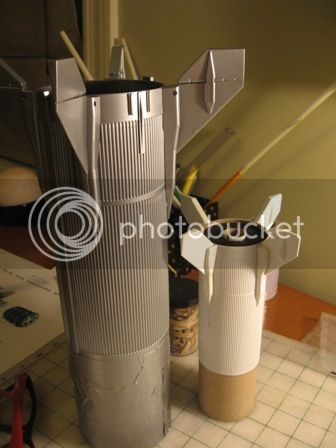- Joined
- Jan 17, 2009
- Messages
- 5,204
- Reaction score
- 1,547
General Dynamics Convair Plaque
PDF file at: https://www.mediafire.com/view/j2h1v1xfykkm38d/Plaque_print_test_145.pdf
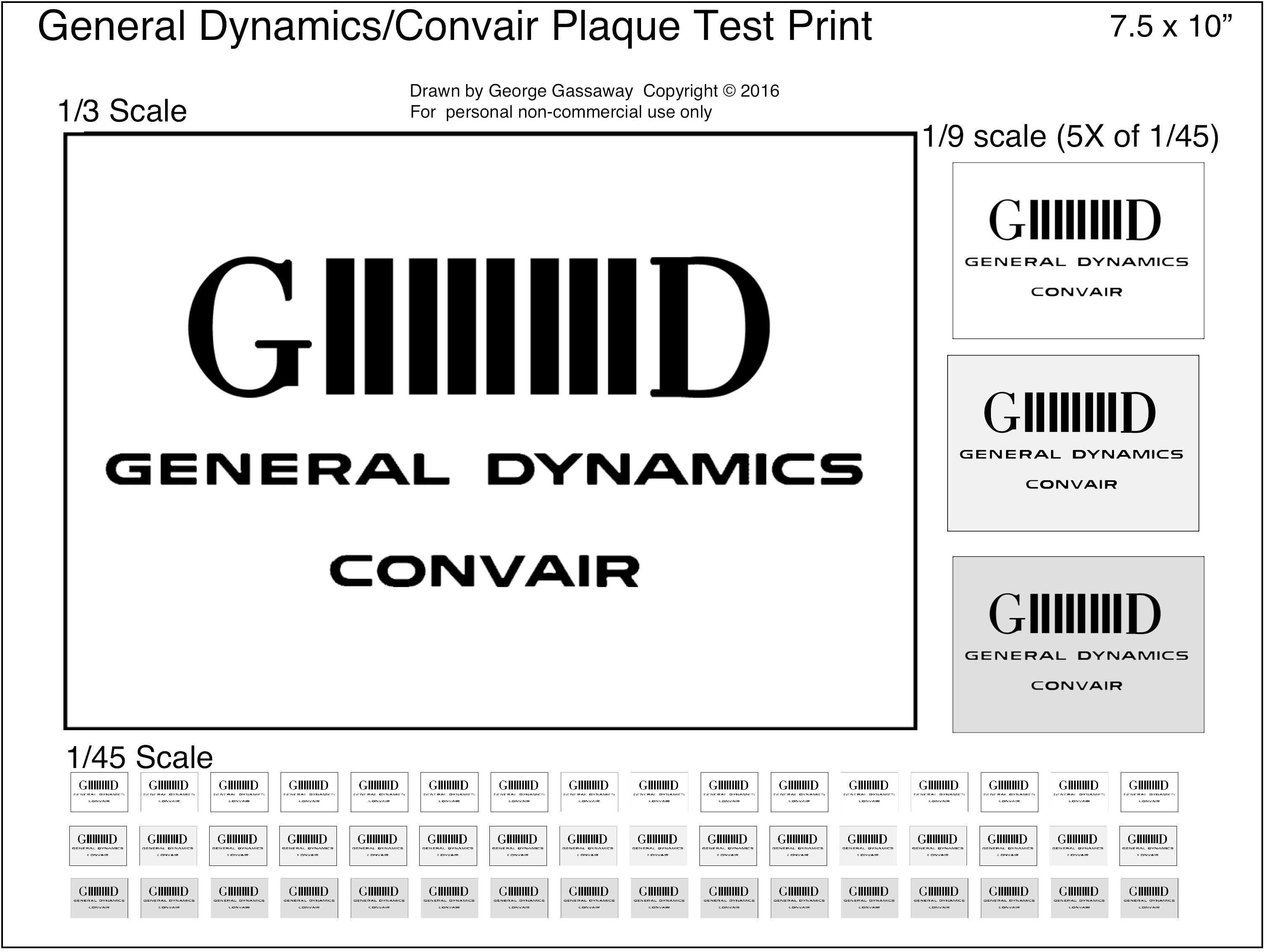
This is an approximately 20 x 14” plaque that is located on two sides at the base of the Little Joe-II. It was also on the Launch Pad.
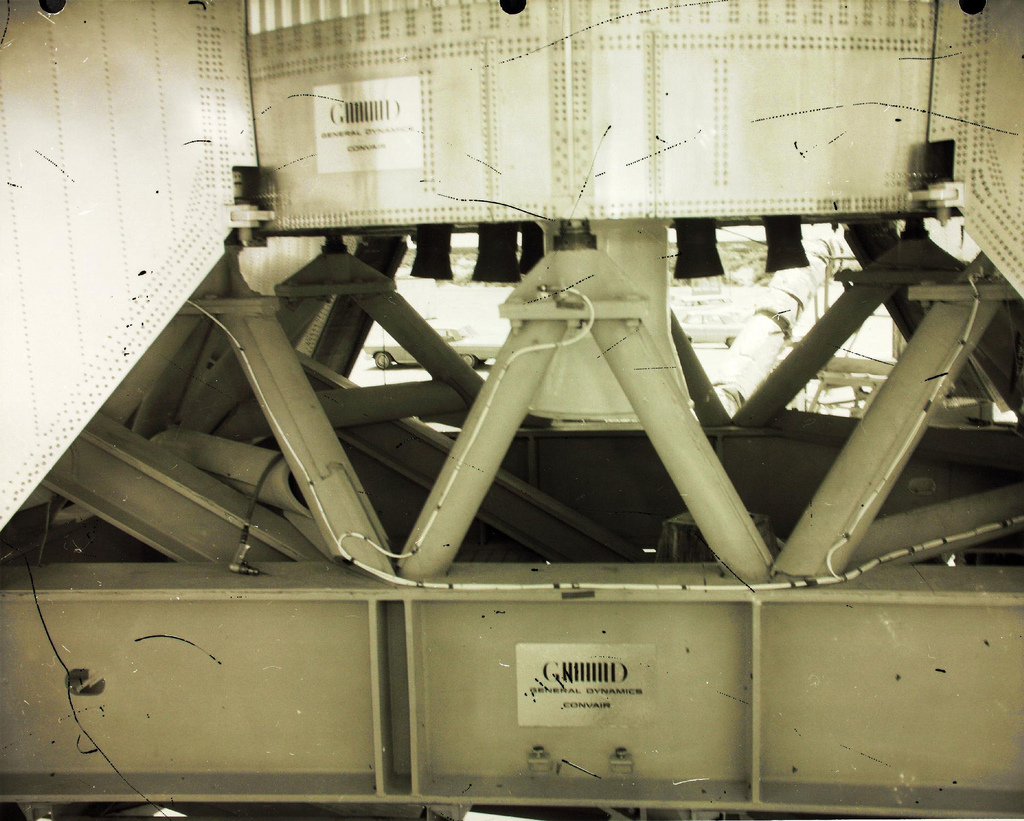
It is a very shiny plaque, such as stainless steel or chrome. I have done one model in the past that had the plaque set, a 1/100 Peanut Scale model of A-002 in 1991. What I did for that was to print the black onto clear decal paper. For the plaque, I cut out a rectangle for adhesive chrome mylar tape, and put the decal over it. In the image below, the model is with a photo of the real A-002.
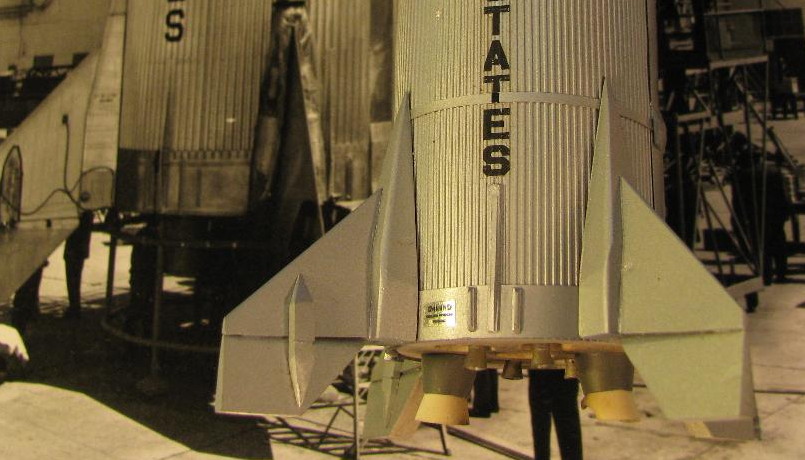
In the Plaque file linked above, I have at 1/3 scale, 1/9 scale, and 1/45 scale. I made up some with some gray gradients, because I’m not ready to print up any decals yet. So, I printed it out on paper, and used the darkest 1/45 gray versions for the new model. Used double sided tape to stick them on. Later I’ll replace the paper ones with mylar and clear decal plaques.
Also, I am going to create a custom decal sheet for those plaques at 1/45 scale, and for the UNITED STATES lettering. The lettering is needed in part as spares for when things go badly in applying the decals. Indeed I ruined one of the ones from the kit decals and had to cut a spare out of a sheet for a second kit. Also, I think could be a bit more accurate, the letters in the kit decals are spaced a bit too far apart, the “U” is up bit higher than it should be when the second “T” base is where it shield be at the splice ring.
So, that will be a future file addition, GD/C plaques and spare UNITED STATES decals. I’ll draw them onto a 5.5 x 8.5 sheet, as that is the size of the paper that Testor’s sells, which often can be bought at Michaels with a 40% coupon.
- George Gassaway
PDF file at: https://www.mediafire.com/view/j2h1v1xfykkm38d/Plaque_print_test_145.pdf

This is an approximately 20 x 14” plaque that is located on two sides at the base of the Little Joe-II. It was also on the Launch Pad.

It is a very shiny plaque, such as stainless steel or chrome. I have done one model in the past that had the plaque set, a 1/100 Peanut Scale model of A-002 in 1991. What I did for that was to print the black onto clear decal paper. For the plaque, I cut out a rectangle for adhesive chrome mylar tape, and put the decal over it. In the image below, the model is with a photo of the real A-002.

In the Plaque file linked above, I have at 1/3 scale, 1/9 scale, and 1/45 scale. I made up some with some gray gradients, because I’m not ready to print up any decals yet. So, I printed it out on paper, and used the darkest 1/45 gray versions for the new model. Used double sided tape to stick them on. Later I’ll replace the paper ones with mylar and clear decal plaques.
Also, I am going to create a custom decal sheet for those plaques at 1/45 scale, and for the UNITED STATES lettering. The lettering is needed in part as spares for when things go badly in applying the decals. Indeed I ruined one of the ones from the kit decals and had to cut a spare out of a sheet for a second kit. Also, I think could be a bit more accurate, the letters in the kit decals are spaced a bit too far apart, the “U” is up bit higher than it should be when the second “T” base is where it shield be at the splice ring.
So, that will be a future file addition, GD/C plaques and spare UNITED STATES decals. I’ll draw them onto a 5.5 x 8.5 sheet, as that is the size of the paper that Testor’s sells, which often can be bought at Michaels with a 40% coupon.
- George Gassaway
Last edited:





